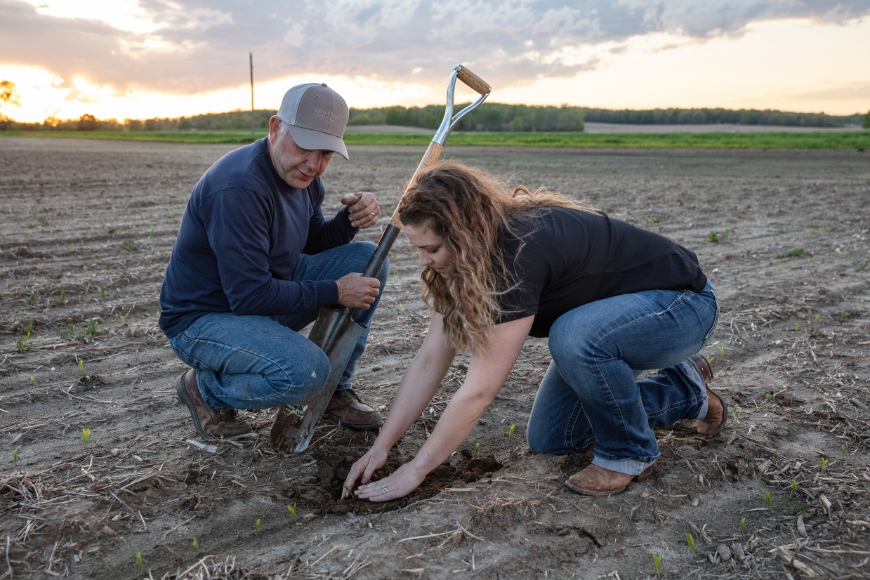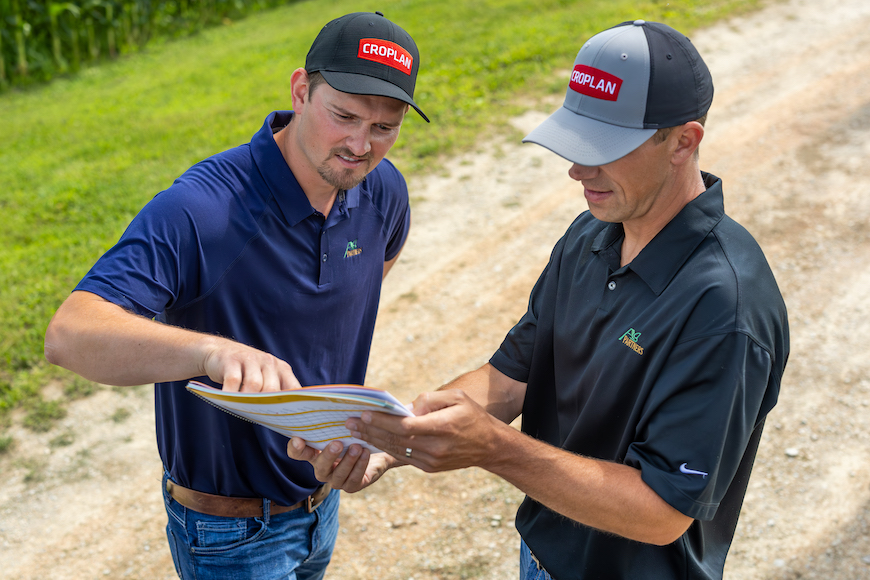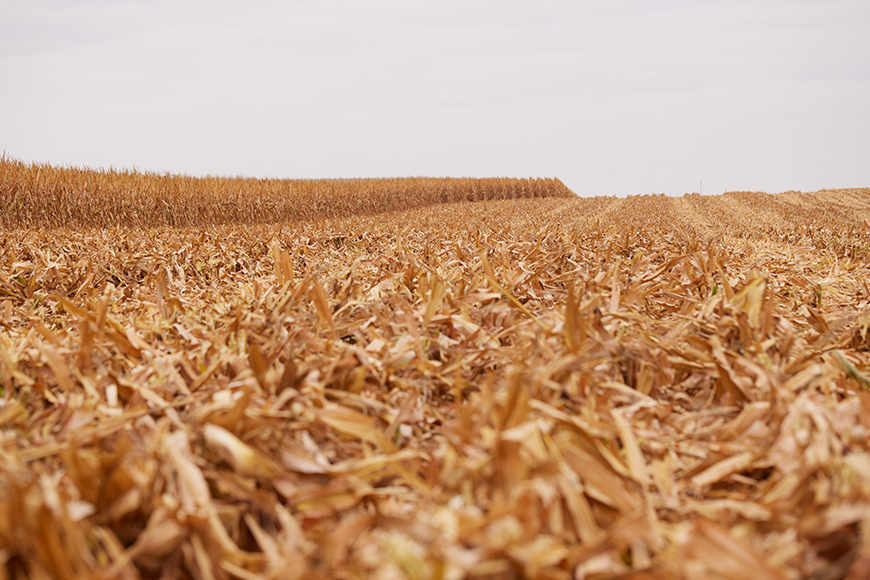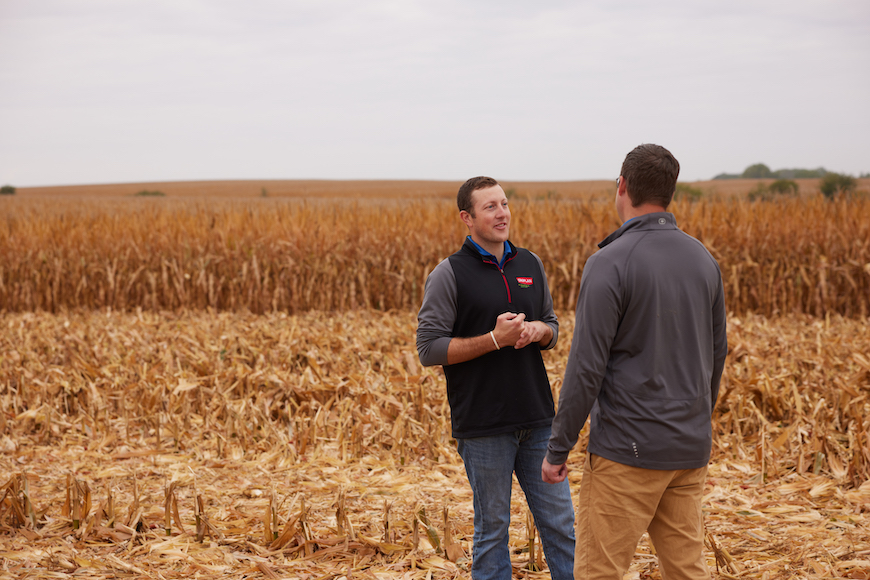May 19, 2025
5 Things You Can Do Now to Prep For Next Season
Clayton Johnson
Seed Product Manager

As planting wraps up and the growing season begins, it's a critical time to monitor crop progress and gather the right insights to make better decisions for next year—especially when it comes to seed selection. With the seed purchase cycle moving earlier each year, the work you do now can make a big difference in how confident and prepared you are when it’s time to place orders for 2026.
Here are some key steps you can take this season to help build a solid foundation for smarter management decisions down the road.
1. Evaluate Crop Emergence
As crops emerge, plan to be in your fields to observe which hybrids and varieties are off to the strongest start. Early seedling vigor and uniform emergence can tell us a lot about seed quality. Pay attention to:
2. Assess Weed Control Effectiveness
Shortly after planting corn and applying pre-emergence herbicides, take the time to assess weed control performance. Use these observations to plan:
3. Monitor Stress and Nutrient Deficiencies Mid-Season
As the season progresses, it’s important to identify areas of crop stress—whether that’s from weather, fertility issues or disease pressure. Tissue sampling during the early vegetative stages can help identify fertility issues that you may be able to remedy with in-season nutrient applications. Scout fields to get insights that help answer these questions:
4. Analyze Response to Different Management Practices
As you know, every field has different needs. You’re likely putting more offensive-style hybrids on your most productive acres—but are you managing those hybrids to their top-end yield potential? Use this season to learn how different seed hybrids and varieties respond to various management practices.
CROPLAN® hybrids are scored based on their response to population (RTP), nitrogen (RTN) and fungicides (RTF). This information can help ensure you manage your crop to its maximum potential. RTN and RTF scores can help you focus fertility and fungicide applications on the acres where they’ll maximize ROI potential, helping ensure every dollar you spend goes further.
Your goal should be to build a seed portfolio that includes four or five solid performers—each matched to the right acres and management strategies.
5. Document What You See
One of the most overlooked—but critical—steps in making more profitable decisions is documenting what you observe in the field. Drone imagery, in-season photos or notes on a field map can help you document things like:
There are many digital scouting tools available that can simplify in-season documentation and record management. If you prefer traditional paper and pencil note-taking, just be sure your observations are organized and easily accessible when it's time to make decisions.
More Information Leads to Better Decisions
We’ve all had that moment in the fall when we remember seeing something important back in June—but can’t quite recall the details. Don’t let that happen this season. Take good notes. Ask good questions. And leverage resources like WinField® United Answer Plot® trials to observe and learn about the latest seed products before you put them in your field next year.
The more you observe and record this season, the better you’ll be positioned to succeed next year. Let’s make this season count—not just for the crop we’re growing, but for the one we’ll be planning next.
Contact your local agronomic advisor or CROPLAN retailer for support as the season progresses.
All photos are either the property of WinField United or used with permission.
© 2025 WinField United. Important: Before use always read and follow label instructions. Crop performance is dependent on several factors many of which are beyond the control of WinField United, including without limitation, soil type, pest pressures, agronomic practices and weather conditions. Growers are encouraged to consider data from multiple locations, over multiple years and to be mindful of how such agronomic conditions could impact results. Answer Plot, CROPLAN and WinField are trademarks of WinField United.
Here are some key steps you can take this season to help build a solid foundation for smarter management decisions down the road.
1. Evaluate Crop Emergence
As crops emerge, plan to be in your fields to observe which hybrids and varieties are off to the strongest start. Early seedling vigor and uniform emergence can tell us a lot about seed quality. Pay attention to:
- Germination and seedling vigor
- Evaluate how quickly seeds germinate in various soil conditions. Understand how different hybrids and varieties respond to cool, wet soils versus more favorable conditions.
- Assess seedling health at emergence.
- Emergence uniformity between hybrids and varieties
- Early growth response to starter fertilizers, plant growth regulators and herbicides
2. Assess Weed Control Effectiveness
Shortly after planting corn and applying pre-emergence herbicides, take the time to assess weed control performance. Use these observations to plan:
- Post-emergence herbicide timing
- Side-dress fertilizer application windows
- Additional tank mix products, if necessary
3. Monitor Stress and Nutrient Deficiencies Mid-Season
As the season progresses, it’s important to identify areas of crop stress—whether that’s from weather, fertility issues or disease pressure. Tissue sampling during the early vegetative stages can help identify fertility issues that you may be able to remedy with in-season nutrient applications. Scout fields to get insights that help answer these questions:
- Are there visible signs of nutrient deficiency?
- Do certain hybrids and varieties handle heat or drought stress better?
- Is there a disease issue that should be managed differently next year?
4. Analyze Response to Different Management Practices
As you know, every field has different needs. You’re likely putting more offensive-style hybrids on your most productive acres—but are you managing those hybrids to their top-end yield potential? Use this season to learn how different seed hybrids and varieties respond to various management practices.
CROPLAN® hybrids are scored based on their response to population (RTP), nitrogen (RTN) and fungicides (RTF). This information can help ensure you manage your crop to its maximum potential. RTN and RTF scores can help you focus fertility and fungicide applications on the acres where they’ll maximize ROI potential, helping ensure every dollar you spend goes further.
Your goal should be to build a seed portfolio that includes four or five solid performers—each matched to the right acres and management strategies.
5. Document What You See
One of the most overlooked—but critical—steps in making more profitable decisions is documenting what you observe in the field. Drone imagery, in-season photos or notes on a field map can help you document things like:
- Areas of disease, weed or insect pressure
- Crop nutrition and protection application performance (include rates and timing)
- Performance differences between varieties and hybrids
- Stress symptoms and timing
- Variations in growth stages
- Crop dry down
There are many digital scouting tools available that can simplify in-season documentation and record management. If you prefer traditional paper and pencil note-taking, just be sure your observations are organized and easily accessible when it's time to make decisions.
More Information Leads to Better Decisions
We’ve all had that moment in the fall when we remember seeing something important back in June—but can’t quite recall the details. Don’t let that happen this season. Take good notes. Ask good questions. And leverage resources like WinField® United Answer Plot® trials to observe and learn about the latest seed products before you put them in your field next year.
The more you observe and record this season, the better you’ll be positioned to succeed next year. Let’s make this season count—not just for the crop we’re growing, but for the one we’ll be planning next.
Contact your local agronomic advisor or CROPLAN retailer for support as the season progresses.
All photos are either the property of WinField United or used with permission.
© 2025 WinField United. Important: Before use always read and follow label instructions. Crop performance is dependent on several factors many of which are beyond the control of WinField United, including without limitation, soil type, pest pressures, agronomic practices and weather conditions. Growers are encouraged to consider data from multiple locations, over multiple years and to be mindful of how such agronomic conditions could impact results. Answer Plot, CROPLAN and WinField are trademarks of WinField United.
IF YOU LOVE OUR INSIGHT, YOU’LL LOVE OUR ROI POTENTIAL
Every successful harvest starts with a seed. It just can't end there. Choose which high-performing seed products you’ll start with this season.






